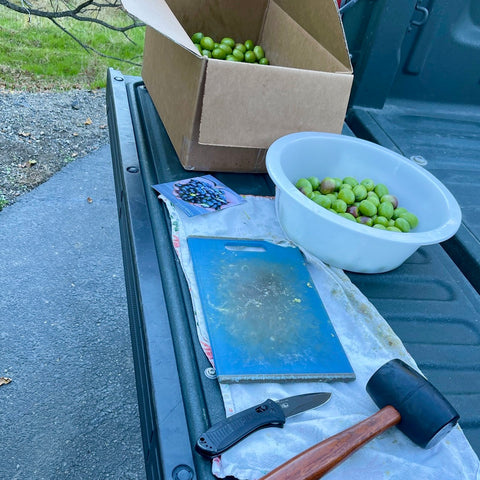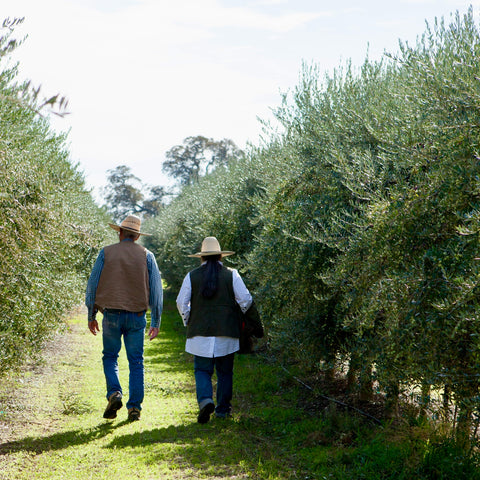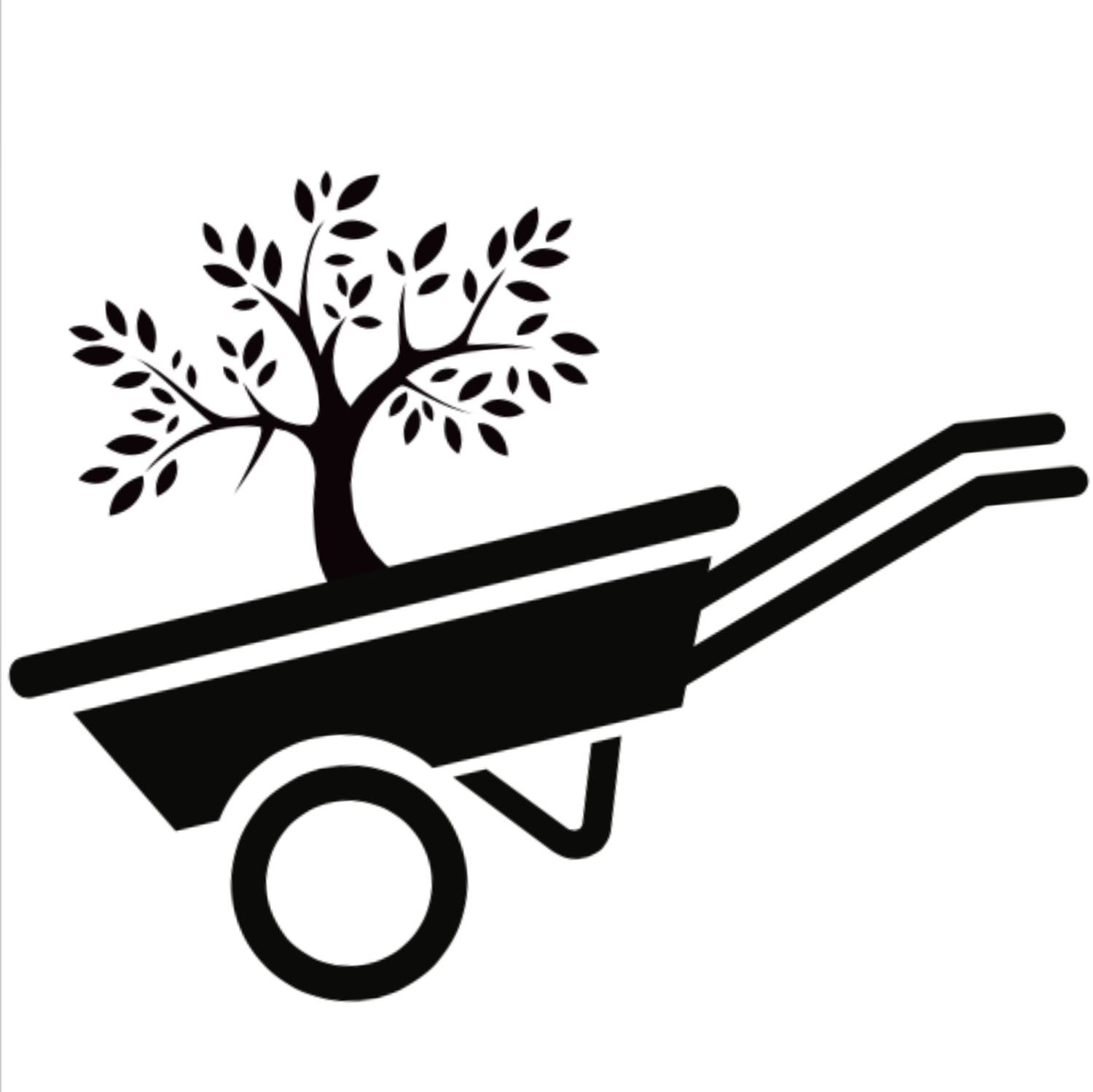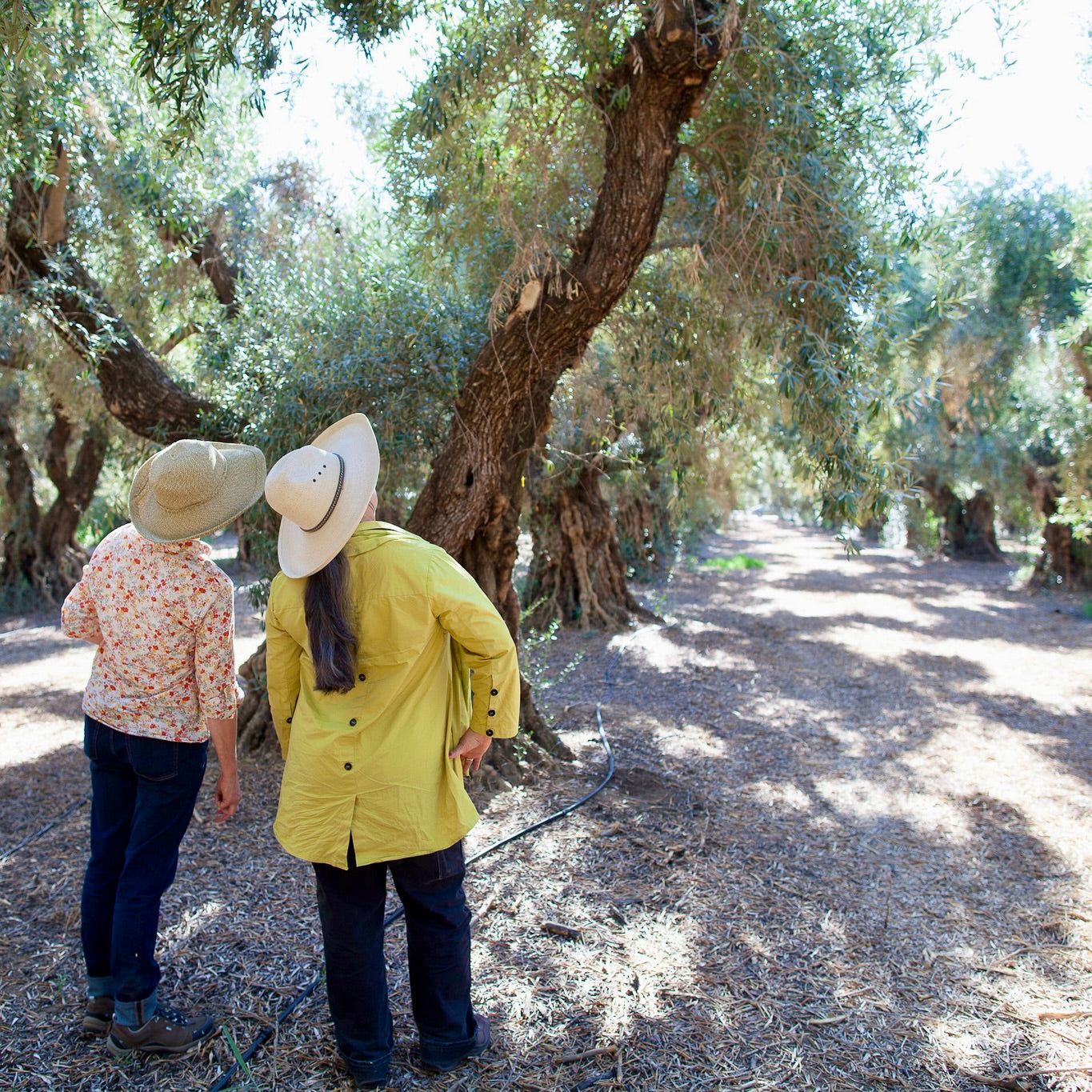
Cultivating and Caring for Olive Trees
Embracing the allure of cultivating and nurturing your own olive trees can be deeply rewarding. From the gentle rustle of leaves in the breeze to the rich fruit they bear, each step in the process holds its own charm. Whether you’re a seasoned gardener or a budding enthusiast, delving into the art--and science--of tending to olive trees is a timeless and gratifying endeavor.
Read further to better understand the particulars of nurturing these venerable trees. This introductory essay covers fundamentals such as site selection and soil composition as well as irrigation and pruning techniques, and every facet plays a crucial role in fostering healthy trees. Whether you're interested in cultivating for olive oil, table olives, or landscaping, these techniques will support your work.
I hope this helps you produce sustainable olives, a tranquil silvan sanctuary, or both.
Choosing the right location for your olive trees
Selecting the ideal location for your olive trees is paramount to their overall health and productivity. Olive trees thrive in Mediterranean climates, characterized by hot, dry summers and mild, wet winters. In this sense, understanding your own particular microclimate will be helpful, for example, areas with higher humidity or more moderate year-round weather are more prone to pests such as the olive fly, so extra mitigation steps will be necessary. Olive trees are particularly suited to USDA zones 8, 9, 10, and 11.
When choosing a location, ensure it receives ample sunlight and good air circulation. This will help prevent fungal diseases and promote optimal fruit production. Additionally, consider the soil drainage and pH levels as olive trees prefer well-drained, slightly alkaline soil. Olive trees don't like their feet kept wet, and if you have eucalyptus trees on your property, keep in mind that this species is invasive in the US and thrives by creating an acidic soil base around itself (>5.0) which kills native plants and may discourages olive trees. Olive trees will do okay with a soil pH of 5.0, however, please know that the ideal range starts at 5.0 and goes to 8.5.
Careful consideration of these factors will lay the foundation for healthy, thriving olive trees.
Selecting the right olive tree varieties
Selecting the right olive tree varieties is crucial to the success of your orchard. There are numerous choices, each with its own unique characteristics, flavor profiles, and best uses. Top varieties for table olives include Sevillano (aka Gordal], which is widely marketed as a "Queen" olive for its tremendous size and meaty flesh, and the smaller but very delicious Manzanillo. Both are self fertile, however, will be more productive having each other nearby as pollenizers. Manzanillo has the added benefit of being dual purpose as an oil olive, too.
There are a significant number of choices for oil olives. If you are considering a high acreage enterprise (more than 80 acres), the most popular choices are the late 20th century / early 21st century hybrids which take well to being espaliered into hedgerows. A trellis system allows trees to be mechanically pruned and mechanically harvested, reducing labor costs significantly. The most widely planted variety is Arbequina using Arbosana and Koroneiki as pollenizers. For more unique flavors Favolosa and Lecciana are among newer breeds offering growers a choice.
Medium density planting is more widely accepted today as updated canopy contact and trunk shaking harvesting methods are being continuously developed and refined. Choices here include "Tuscan" varieties for folks who live in cooler climates, namely Frantoio, Leccino, Pendolino, and Moraiolo. Southern Mediterranean choices are best for hotter interior properties including popular varieties Coratina and Picual.
If you are in an area that requires fruitless olive trees for landscaping, such a thing exists! Dr. David Ramming at UC Davis began cross-breeding Manzanillo and Mission trees (among others, I assume) in the 1980s to develop a variety for solely ornamental purposes. Released in the early 1990s, the Wilsonii variety, named for the generous donor who funded the research, has established itself as the go-to variety for communities in the southwest that have banned fruit trees that produce pollen and fruit. Since the advent of the Wilsonii, other cultivars have been developed.
It is estimated that there are at least 1,000 unique olive varieties in the world, and possibly as many as 2,000 cultivars (cultivated varieties). Consider the climate and growing conditions in your area as well as how you'd like to use your olive fruit to determine which olive tree varieties will thrive best in your orchard or garden. We are happy to assist you in selecting trees for your project.
Planting and establishing your olive trees
Proper planting and establishment are essential for the long-term health and productivity of your olive trees. Home gardeners should ensure the soil is well-prepared with ample organic matter, but not too rich as olives thrive in sandy/rocky conditions, and certainly not clay, which lacks airspace for roots and may cause a tree to drown. Dig a hole slightly larger than the root ball. Spread the roots evenly around so that the tree is established in a balanced fashion, and backfill with soil, gently firming it around the base of the tree.
Water thoroughly after planting to settle the soil and provide essential moisture to the newly transplanted tree. Mulching around the base of the tree can help conserve moisture and suppress weed growth. Adequate care during the initial stages will set the stage for the successful establishment of your olive trees.
If you plan on planting for commercial purposes you must also determine if you will install drip irrigation or choose to be "dry farmed", i.e., rain fed only. Unlike other drupes, olive trees can more readily survive long periods without water, just be aware that yields will drop and the flavor profile of the fruit may be adversely affected with too little water.
Watering, pruning, and fertilizing olive trees
Proper care is essential for the overall health and productivity of your olive trees. Watering is crucial, especially during the first few years after planting. Once established, olive trees are drought-tolerant, but regular watering during dry periods is still necessary, particularly during the flowering and fruit development stages. An interesting aspect of water is how the needs differ right before harvest. Table olive growers harvest early before oil development and use a lot of water to plump the fruit, however, oil olive growers do the opposite by employing a technique called deficit irrigation. Similar to wine grapes, too much water during ripening will diminish flavors, and excess water (as well as too little) inhibits oil extraction at the mill.
Pruning is another critical aspect of olive tree care, promoting a balanced canopy and optimal fruit production as olive trees only produce fruit on new wood. Olive trees are very resilient, so don't worry about taking off too much. Keep your tree at a good height for your area; just because they might have the ability to be 30' tall doesn't mean you should let them. Truly ancient trees in the Mediterranean are often kept at just above human-height, all the better to hand harvest!
Fertilizing with a balanced, slow-release fertilizer in the spring can provide essential nutrients for healthy growth and fruit development. Avoid over-feeding as that will promote foliar growth at the expense of fruit production. Growers who use drip irrigation can use those same lines to introduce minute amounts of nutrition in a process known as "fertigation".
Protecting your olive trees from pests and diseases
Protecting your olive trees from pests and diseases is vital to ensure their long-term health and productivity. Common pests include olive fruit fly, scale insects, and olive moth, while diseases such as olive knot and verticillium wilt can pose significant challenges. Regular monitoring and implementing integrated pest management strategies can help mitigate these risks. Utilizing natural predators, practicing good orchard hygiene, and applying organic pest control measures can help maintain a healthy, thriving orchard. This is a deep and nuanced subject with individualized needs, so it's best to confer with your local farm advisor or master gardener program should you have questions. The UC Davis Olive Center is another resource for you with a through and generous database available to any and all interested parties online, free of charge.
Harvesting and processing olives
Olives are precocious and will start to fruit after a few years. Year 3 in the ground will return a small crop, and full production is usually achieved at about year 5. The ideal time to harvest olives varies depending on the end product desired. For oil production, harvesting at the green to purple stage yields a more robust and peppery oil, while fully ripe olives express themselves in a sweeter and more buttery fashion. Please contact local millers in the summer to inquire about community milling days or other contract milling opportunities before you harvest as milling schedules fill quickly.
Hard green olives are preferred for table olives, unless you're looking to do one of the ripe dry cures. Keep in mind that olives are a low acid food, and improper handling can lead to botulism. We recommend you study and adhere to the food safety guidelines developed by UCANR Olives: "Safe Methods for Home Pickling."
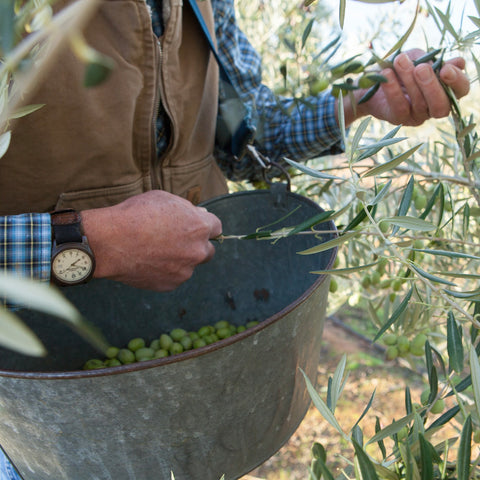
Olive tree maintenance throughout the seasons
Olive tree maintenance is a year-round responsibility with each season presenting its own set of tasks. Spring is the time for pruning and fertilizing to stimulate new growth and fruit development. Summer calls for careful irrigation management to support fruit maturation, while fall is the time for harvesting. Winter brings the opportunity for light pruning and overall orchard maintenance. By staying attuned to the seasonal needs of your olive trees, you can promote their long-term health and productivity while ensuring a bountiful harvest year after year.
